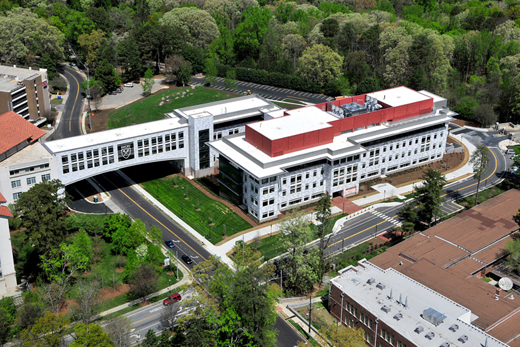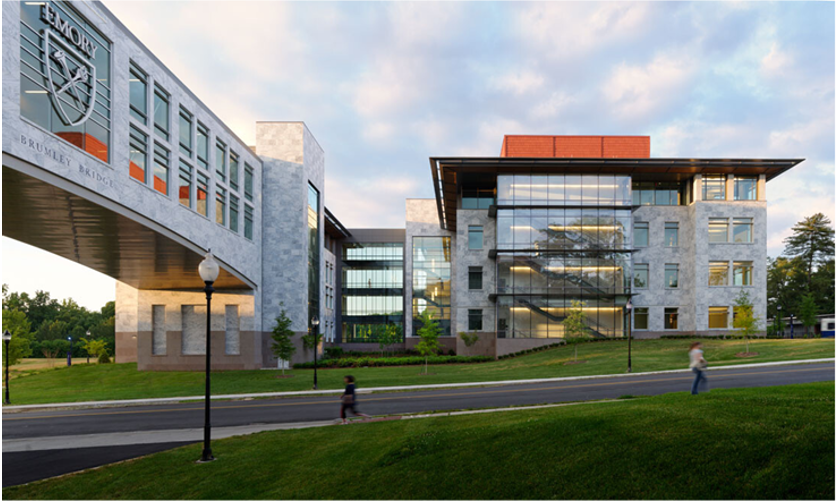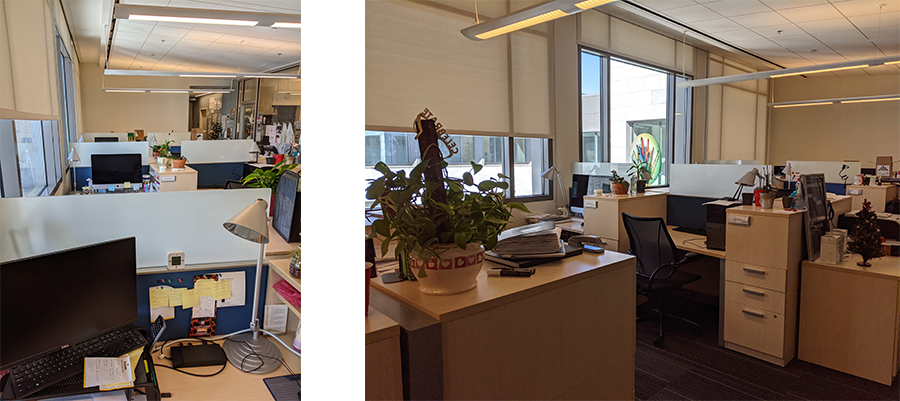FACILITIES
Emory’s School of Medicine is one of the nation’s leading research institutions, ranking within the top 10 in total NIH-sponsored research. In 2020, the Department of Pediatrics ranked #1 in the US in terms of pediatric research funding. Emory’s School of Medicine is best known for its research and treatment in infectious diseases, neurosciences, heart disease, cancer, transplantation, orthopedics, pediatrics, renal disease, ophthalmology, and geriatrics. Emory’s research programs have been expanding rapidly, especially in the field of HIV-related research, facilitated by Emory’s Center for AIDS Research (CFAR) and leading advances in clinical infectious diseases and HIV care, research pathogenesis, virology, immunology, epidemiology, diagnostics, and vaccine development. The Emory campus is a collaborative environment that encourages interdepartmental research projects. There are also extensive close interactions with scientists at the Centers for Disease Control (CDC), which is proximal to the Emory campus.


Emory University Health Sciences Research Building
Laboratory
The Sarafianos lab currently occupies almost 2,000 sq. ft. of general laboratory BSL2 space at the newly built Health Science Research Building (HSRB) and Center for Drug Discovery, which is fully equipped for protein chemistry, enzymology and structure studies. The Sarafianos lab space includes ~200 sq. ft. of BSL2+ lab space with 2 tissue culture hoods and ancillary equipment necessary to work with pathogens requiring enhanced BSL2 practices (e.g. HIV, HBV).
The Sarafianos lab has also access to a 425 sq. ft. BSL3 suite (adjacent to the primary lab space), containing two rooms, each equipped with biological safety cabinets for work at BSL3 containment levels (e.g. SARS-CoV-2). The Sarafianos lab also has access to an additional 2,000 sq. ft. BSL2 laboratory and cold/warm rooms shared with the Laboratory of Biochemical Pharmacology as well as approximately 60 sq. ft. of storage for 3 upright -80 freezers in the facilities freezer farm.

Office
The Sarafianos lab has 5 offices (555 sq. ft.) and 18 desk-stations/cubicles (486 sq. ft.) for support staff, faculty, post-docs, technicians, and graduate students.

Computers
The Sarafianos lab has more than 15 computers all with access to a secure central computer server network and all necessary software. The Department of Pediatrics has IT/network support staff located next door to the HSRB in the Emory Children’s Center. The lab has a heterogeneous computing environment (PC, Mac, Linux) including 3 Linux quad-processor, 2 two-processor graphics workstations (4 with stereoview and 8 pairs of stereo glasses), and 2 GPU workstations. Our Linux computers have installed the latest versions of molecular modeling, crystallographic and visualization software including Schrödinger, MAESTRO, AUTODOCK, Coot, CNS, CCP4, PYMOL, Phenix, d*TREK, HKL2000, and XDS.
Facilities
Being a part of Emory includes access to a number of cores and centers throughout Georgia. The Emory Core Facilities provide a number of valuable core facilities for use by all investigators that include integrated cellular and biomedical systems imaging, biostatistics and bioinformatics, electron microscopy, a personalized immunotherapy center, flow cytometry, genomics, proteomics, transgenic mouse and gene targeting, and rodent behavioral characterization. The Sarafianos Lab is also an active member of the Center for AIDS Research (CFAR)
Integrated Cellular Imaging (ICI) Core
The ICI core provides state-of-the-art light microscopy and image analysis technology. They offer confocal and live cell imaging, multi-photon animal and tissue imaging, widefield with deconvolution, super resolution, and image analysis (see Equipment). The ICI core also provide consultations, expert training, and support for all systems.
Robert P. Apkarian Integrated Electron Microscopy Core (RPAIEMC)
The Robert P. Apkarian Integrated Electron Microscopy Core at Emory University is located at two sites. The Cherry L. Emerson Hall site provides services and training that include conventional transmission electron microscopy, cryo-scanning electron microscopy, cryo-transmission electron microscopy, and cryo-electron tomography (Cryo-ET). The Biochemistry Connector site provides services and training in single particle cryo-electron microscopy (Cryo-EM). The services include conventional TEM & SEM imaging of biological and materials science specimens, cryo-high resolution SEM (cryo-HRSEM), imaging of frozen-hydrated specimens, conventional light microscope (LM) imaging, negative staining, standard EM & LM sample embedding, standard ultrathin and semithin microtomy, cryo-ultramicrotomy, high pressure freezing (HPF) and self-pressurized rapid freezing (SPRF), cryo-substitution and embedding, ultrathin metal film coating, EM and LM enzyme-cytochemistry, EM and LM immunocytochemistry, negative stain single particle EM, cryo-EM specimen preparation, high resolution single particle cryo-EM, and basic image analysis and image processing for grants and publications. The RPAIEMC has ~2500 sq. ft. of dedicated lab and office space. The laboratory areas of the RPAEIMC include dedicated electron microscopy specimen preparation labs, rooms that house the electron microscopes, and infrastructure equipment chases. Two chemical fume hoods are also located within the space. The RPAIEMC has computers associated with equipment as described in the Equipment section. Individual members of the RPAIEMC also have personal workstations that support their core activities. In addition, there are three iMac workstations to support image processing and analysis. The RPAIEMC has ~300 sq. ft. of office space within the RPAIEMC. The office space is utilized for meetings with clients, computational services, and weekly RPAIEMC team meetings.
X-ray Crystallography Center
The Department of Chemistry at Emory University maintains the X-ray Crystallography Center, an ~150 sq. ft. state-of-the-art automated crystallization and ‘in-house’ data collection facility to support the research programs of four structural biology groups. Emory is also a member of SER-CAT (Southeast Regional Collaborative Access Team) at the Advanced Photon Source (APS), Argonne National Laboratory, providing 12 days ID (undulator insertion device) beamtime and 12 days of BM (bending magnet) beamtime per year to the Biochemistry X-ray crystallography groups (Drs. Conn, Liang, Dunham and Ortlund). This membership provides regular scheduled access to essential synchrotron beam time for macromolecular X-ray crystallography.